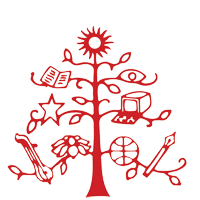
National Institute for Zorig Chusum (Traditional Arts and Crafts)
NGOsKawajangsa, PO Box 653, Tashi Gepheling
Kawajangsa
Thimpu
Tel: 975-2-322302
Fax: 975-2-327172
[email protected]
, Thimpu, Bhutan
The art taught today, in Bhutan, was introduced by the Great Treasure Discoverer, Terton Pema Lingpa, in the fifteenth century. These traditional crafts represent hundreds of years of knowledge and ability that has passed down the generations. Bhutan’s unique artistic tradition has played a vital role in moulding its distinct cultural heritage. This tradition is best reflected in the ‘Zorig Chusum’ or Thirteen Crafts.
Realising that this invaluable heritage could only be protected and that the arts of Bhutan could only be promoted if strong and adequate patronage existed, the government made arrangements for the new artists to be trained at the National Institute for Zorig Chusum (Traditional Arts and Crafts). This was established in 1971. At present, the institute is undergoing renovation and expansion.
The Institute for Zorig Chusum falls under the National Technical Training Authority which was created in 1999 to look after the quality of vocational training. For over 30 years the institute has instructed students in painting, calligraphy, embroidery, wood carving and sculpture. Due to generous grants from the Netherlands, the curriculum and facilities have improved. The dying arts of boot-making and slate-carving have been revived. Metal work, weaving, gold-grinding, and the making of religious drums are now in the curriculum.
The study is intensive and involves 4-6 years of training. The students board at the institute’s hostel where they receive full room and board, which is financed by the government.
Due to the increasing demand for quality zorig chusum products, the opportunities for self-employment for the graduates is high. Instructors and students paint houses, thangkhas, and temples, and create other culturally significant art objects. They contribute their skills to the beautification of both public and private buildings.
The Institute has begun identifying products and strategies to promote self-employment among its graduates. For this a two-year short-term training programmes in gold powder grinding, mineral pigments grinding, and drum- making have been introduced. The Institute hopes to support the graduates establish their own production companies in the above areas.
In addition to the Institute’s daily activities, conservation efforts are underway to help preserve the art treasures of Bhutan. Some students and teachers have been undergoing training in mural painting conservation.
Crafts: Calligraphy, Painting, Sculpture, Carving (wood & slate), Casting, Leather Work (religious drum making), Embroidery and Appliqué (needle work, tailoring, & traditional boot making), Weaving Bamboo Works, Pottery, Gold and Silver Smithy, Blacksmithy, Masonry.